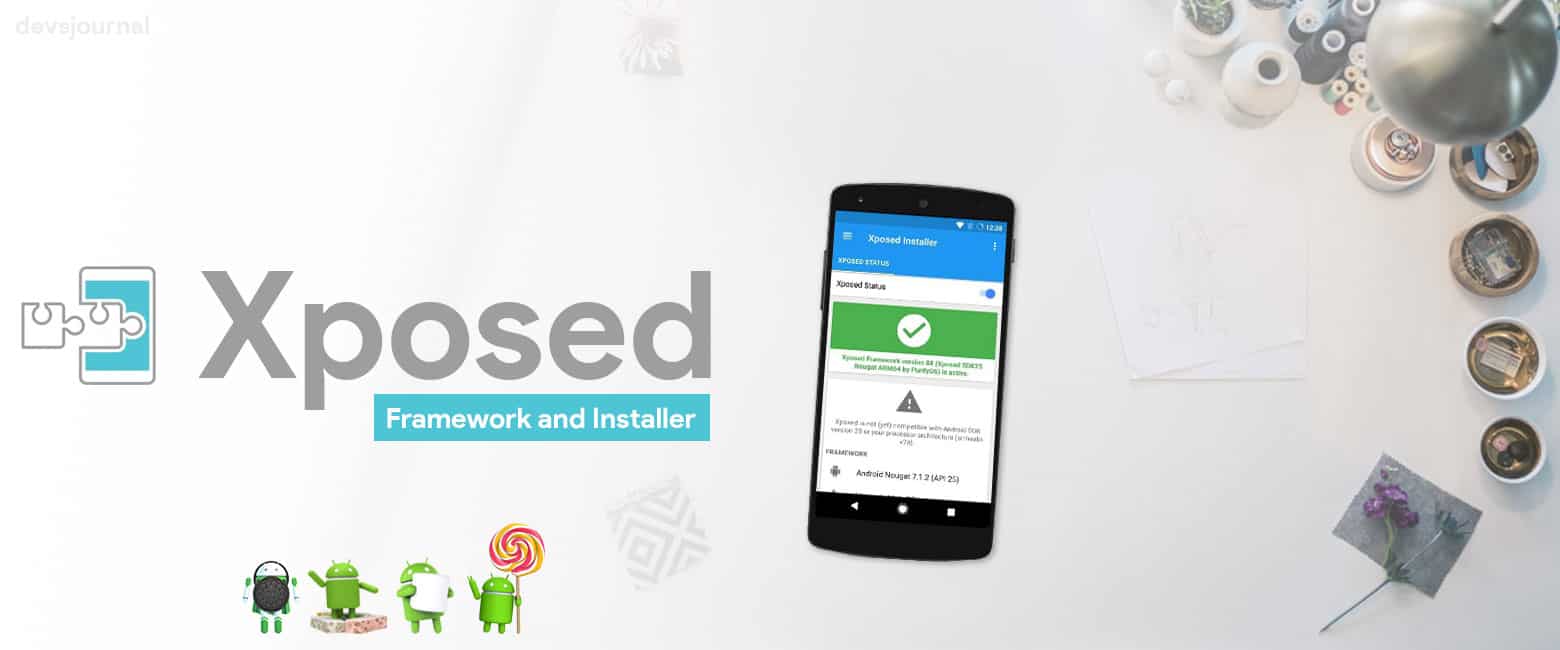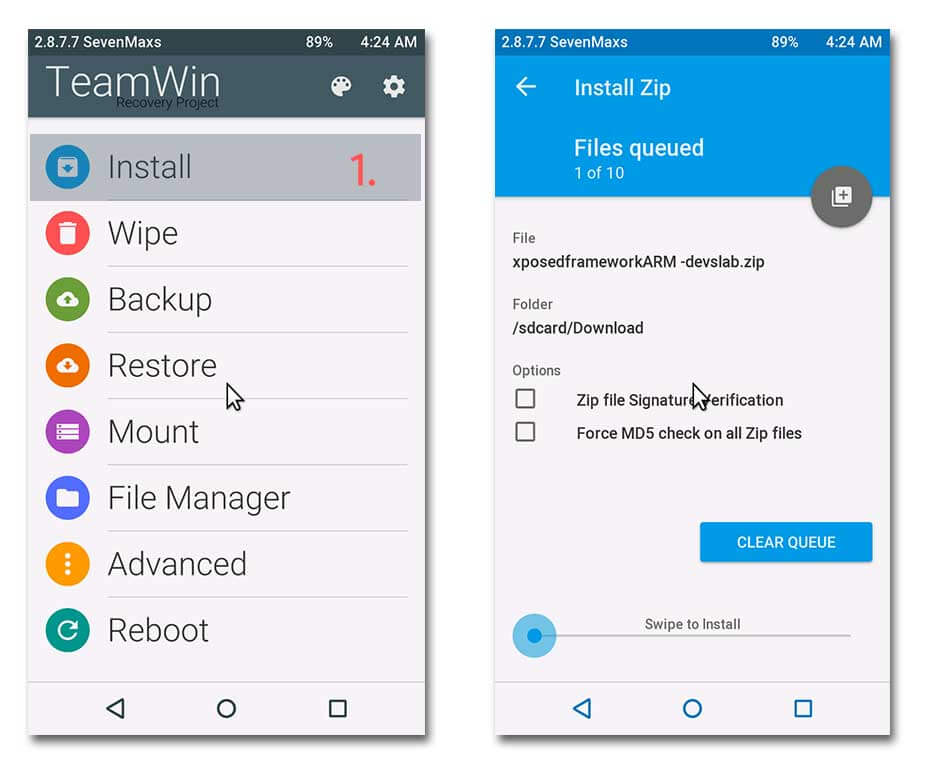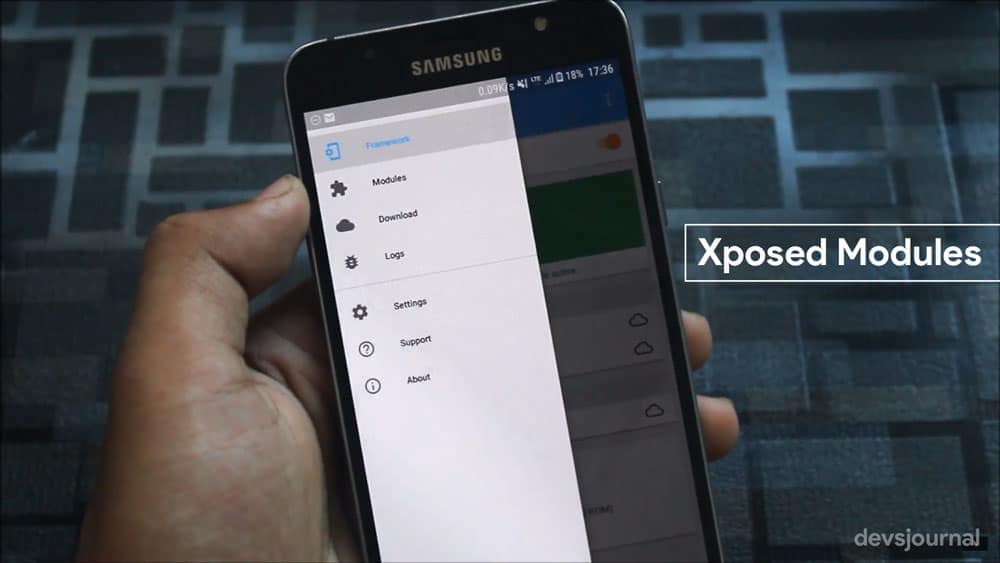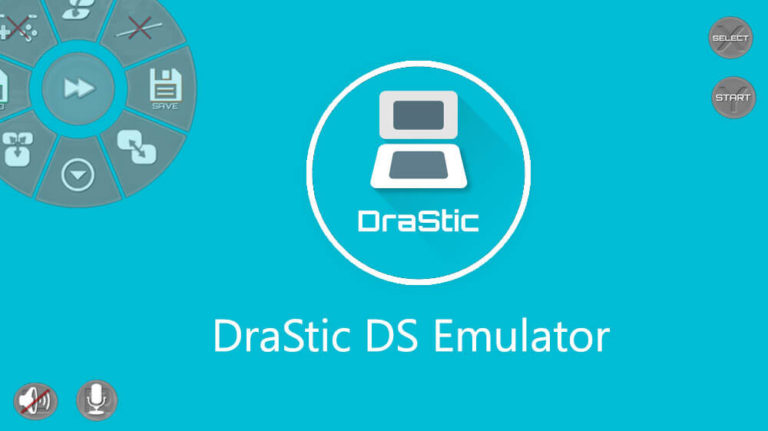
Xposed is one of the most beloved tools an Android enthusiast can have, as it allows for all sorts of modifications to extend the functionality of our favorite devices. If you don’t like getting your hands dirty by compiling & decompiling different System files, then Xposed Installer is the perfect App for you. You can perform all the changes to your choice in just few clicks. You’ll can Download Xposed Framework and Installer for Android Q, Lollipop, Marshmallow, Nougat and Oreo from here.
Xposed is an essential app required to run various different Xposed Modules to add extra functionality to your Android device such as Changing Status bar Icons like Xperia, iOS, Greenify or any other.
Few users didn’t update their device to Android Oreo as Xposed Framework was not available for Android O. It’s been a while now, since Xposed Installer is available for Android O. Without wasting much time, lets get started. After Android Kitkat, one cannot install Xposed directly in their device. Due to too many restrictions & updates from Android Lollipop, Xposed was installed in parts. First we need to flash the Framework which hooks into the system & then the installer that uses the Framework to change system files.
Prerequisites:
- An Android device with bootloader unlocked and TWRP custom recovery
- Your device must be rooted.
- Check which Android version your device is currently running so that you know which zip to download from the below list of Xposed downloads.
- If you’re running Android ICS or below, you don’t need to flash the Framework zip but you need to have a rooted device (Follow this), just download the Xposed Installer, install it as normal APK & grant root access.
- Backup all your data & Apps before flashing the Xposed framework file to avoid data in case anything goes wrong or your device doesn’t boot up. You backup your Android device, you can use FlashFire or Titanium backup.
Xposed Framework and Xposed Installer
Download Xposed for Android R (11.0)

| Platform | Download |
|---|---|
| Magisk – edXposed | Android R 11.0 |
| Magisk – reruCore | Android R 11.0 |
| EdXposed Installer APK | Android R 11.0 |
Download Xposed for Android Q (10.0)

| Platform | Download |
|---|---|
| Magisk – edXposed | Android Q 10.0 |
| Magisk – reruCore | Android Q 10.0 |
| EdXposed Installer APK | Android Q 10.0 |
Download Xposed for Android Pie (9.0)

| Platform | Download |
|---|---|
| Magisk – edXposed | Android Pie 9.0 |
| Magisk – reruCore | Android Pie 9.0 |
| EdXposed Installer APK | Android Pie 9.0 |
Download Xposed for Android Oreo (8.0/8.1)

| Platform | Download |
|---|---|
| ARM (32-bit) | Oreo 8.0 | Oreo 8.1 |
| ARM64 (64-bit) | Oreo 8.0 | Oreo 8.1 |
| x86 (Intel devices) | Oreo 8.0 | Oreo 8.1 |
Download Xposed for Android Nougat (7.0/7.1)

| Platform | Download |
|---|---|
| ARM (32-bit) | Nougat 7.0 | Nougat 7.1 |
| ARM64 (64-bit) | Nougat 7.0 | Nougat 7.1 |
| x86 (Intel devices) | Nougat 7.0 | Nougat 7.1 |
Download Xposed for Android Marshmallow (6.0/6.0.1)

| Platform | Download |
|---|---|
| ARM (32-bit) | Marshmallow 6.0 & 6.0.1 |
| ARM64 (64-bit) | Marshmallow 6.0 & 6.0.1 |
| x86 (Intel devices) | Marshmallow 6.0 & 6.0.1 |
Download Xposed for Android Lollipop (5.0/5.1)

| Platform | Download |
|---|---|
| ARM (32-bit) | Lollipop 5.0 | Lollipop 5.1 |
| ARM64 (64-bit) | Lollipop 5.0 | Lollipop 5.1 |
| x86 (Intel devices) | Lollipop 5.0 | Lollipop 5.1 |
Download Xposed Installer APK
Xposed APK acts a middle man between Xposed Framework & Xposed modules. It allows the modules to makes changes to the system files using the Xposed framework.
Download Xposed Framework Uninstaller
If your device doesn’t boot after Installing Xposed framework, Install this framework remover zip & everything will be fine.
- Xposed Uninstaller: Download
Note: DevsJournal won’t be responsible for anything happening to your device during this process. You will be solely responsible for anything happening to your device as you have decided to make this modifications to your device. If you are unaware about Rooting and customising system files, please do some research. Read: What is Rooting, Recoveries & Custom ROMs.
Features of Xposed
- No need to modify any APKs. This means:
- No need to decompile, change things. It will work for odexed and deodexed ROMs.
- Your mod is not bound to a specific version of the ROM. Unless there is a major change in the methods called for a certain functionality, your mod will continue to work even when you upgrade your ROM. Many modules work for a wide range of ROMs from different vendors.
- Multiple mods can be installed at the same time, even if they modify the same app. So you can use these battery icons and those quick toggles. Even hooking the same method twice is possible. Of course, this only works properly if the mods are not trying to do incompatible things.
- It does its magic at runtime. That means that developers can implement settings and do changes based on them (instead of statically forcing a certain behavior). Or you can have some extra logic for certain ROMs, without building different modversions.
- It can be disabled easily without having to reflash.
- It’s open source and free (as in beer and in speech).
- There is a repository with many popular modules.
How to install Xposed on Android (L/M/N/O/P/Q/R)
Step 1. Download the given files at from above & transfer it in your Internal memory/SD card.
Step 2. Now Switch off your device. Press & hold the necessary key combinations (Mostly it is Vol Up+Power button or Vol Up+Vol Down+Power) for devices having hardware keys, the key combination is mostly Vol up+home+Power button to boot into Recovery mode.

Step 3. After booting into recovery mode, Goto Install zip from SDcard (in CWM) or Install (in TWRP) & locate the downloaded Xposed framework zip that you transferred in your device.
Step 4. Select the zip & Install. Wait for the Installation to complete. Now, Wipe Dalvik & System cache. Reboot your device.
Step 5. You will now have to install the Xposed Installer APK on your Android device. Using a file manager, navigate to the location where you had saved the APK and install it. If you get an error saying “Unknown installations blocked” similar to below image, Just Goto Settings App > Security > Enable Unknown sources. Now install the Xposed app.

Step 6. To check if everything is done perfectly, launch Xposed App & goto Framework. It would show app_process and Xposedbridge with some no. below Active.
How to install Xposed Modules on Android
Once Xposed hooks into your System, you are left to decide which feature you want in your Android device. Each Xposed modules comes with different features to offer. Xposed Framework doesn’t give any features, it’s just a bridge between System and modules.
Xposed uses modules, small applications that plug directly into the Android operating system and give you unprecedented control over the look and feel of your phone. Therefore, any changes made can be removed easily by simply disabling the modules and rebooting.

Xposed modules can be downloaded either from the Xposed App itself or via APK file.
Method 1: Installing Xposed modules via Xposed App
Step 1. Open the Xposed Installer app and tap on “Downloads” option from the menu.
Step 2. Search for the required module of you can scroll through the modules list.
Step 3. Once you have found the required module, tap on the module name. Swipe to Versions tab and click on Download of the latest version available of the module.
Step 4. It will show the app permissions and the features of the module, confirm the installation process by pressing the install button.
Step 5. Once the installation is completed, you can tap on the open option to open the Modules app right away. After the installation, you need to enable the module.
Method 2: Installing Xposed module via APK
Step 1. Download the Xposed module.apk from the repository or from any source and install it normally.
Step 2. Launch the Xposed Installer and go to the “Modules” section (you will also get there if you click on the notification warning you that the module is not enabled yet)
Step 3. Now you need to enable the module, for that follow the below step.
How to enable/disable Xposed Modules
Step 1. Open the Xposed App and click on “Modules” tab. If you have installed the module, you’ll find the list of all the installed modules on your phone.
Step 2. You can toggle the app to ON mode to enable the module and Off mode to disable the module. After enabling/disabling any module, you need to restart your device.
Xposed FAQs
Thanks to XDA’s rovo89 for his awesome work in Xposed Android devices. If you found any issues while installing the zip file. You can ask us in the comment section below. If after flashing the zip file, your device doesn’t boot, Install Xposed framework remover zip from above link. If after installing zip, Xposed is not working, Install different zip file from (ARM,ARM64 & x86).





![[Official] Download GBWhatsApp APK GBWhatsApp 18.60 for Android](https://devsjournal.com/wp-content/uploads/2017/01/GBWhatsApp-Download-768x384.jpg)
I note edge rooted. fy variant.
I tried to install xposed but when I open the app I get the message.the xposed cannot support your version 23 processor armeabi-v7a.
Any update?
Please read the post. It says, for Samsung devices there’s a different method. You’ll find the link at the top.
Hi and sorry if you already say that :/
I have a Samsung S4 with 6.0.1 but not a rom stock. Should I follow this tuto ?
Thank you !
If you are on any AOSP based ROM, you must follow this or else the other guide.
xposed samsung galaxy s5???
You can follow this method Xposed for Samsung devices
Help me framework for himax Y10 please
Is this method suitable for asus zenfone5?
And which zip file is to flashed?
Help pls
Yes! You need to flash x86 zip.
How can i install framework on my note 4 marsmallow? armv7
Xposed for Note 4 Marshmallow
HI I want to install expose framework for my Moto G2 – any link you can share will be great
I use 6.0.1, after install the arm64 zip, my s6 is stuck with a black screen. For fix it, i had to use the uninstaller but how can i install the framework?
Please read the post carefully. Just flash the uninstaller zip from recovery like any other normal zip file.
booted to recovery mode installed the .zip and then cleared cache and rebooted , now it’s stuck on black screen and blue light flashing on and off.
is the phone fucked ?
Samsung s5 neo
Why can’t people read the article first. There’s a different xposed version for Samsung devices. First uninstall the Xposed Framework using the uninstaller zip then read the article again.
Hey, sorry I didnt read the first steps as I was brought here from a link where the person was using an s6. How do i uninstall when I am having the same issues as the guy above.
You can find that too, in below steps.
Which file i should i download for my redmi note 4g with cm13 marshmallow?
pls……
Which will work for samsung j500f marshmallow? Please inform my eamil is
[email protected].
Pls dont ignore.
ARM64 6.0 Xposed Framework
Hi, i have a Samsung galaxy s6 edge and i should use the 64 bit 1. Hoever it bootloops me, any ideas on how i can get it to work?
As I said, Samsung users must follow this method Xposed for Samsung devices
Thank you, Great article, Just flashed my ASUS Zenfone 2 With Xposed framework running Custom CM13 & Android 6.0.1 !!!
Gionee f103 not xposed framework installer help me WhatsApp no 9050049329
Which file to choose for moto e 1 gen running cm 13 ,I’m confused between arm (32) bit SDK 23 x85 or x76?